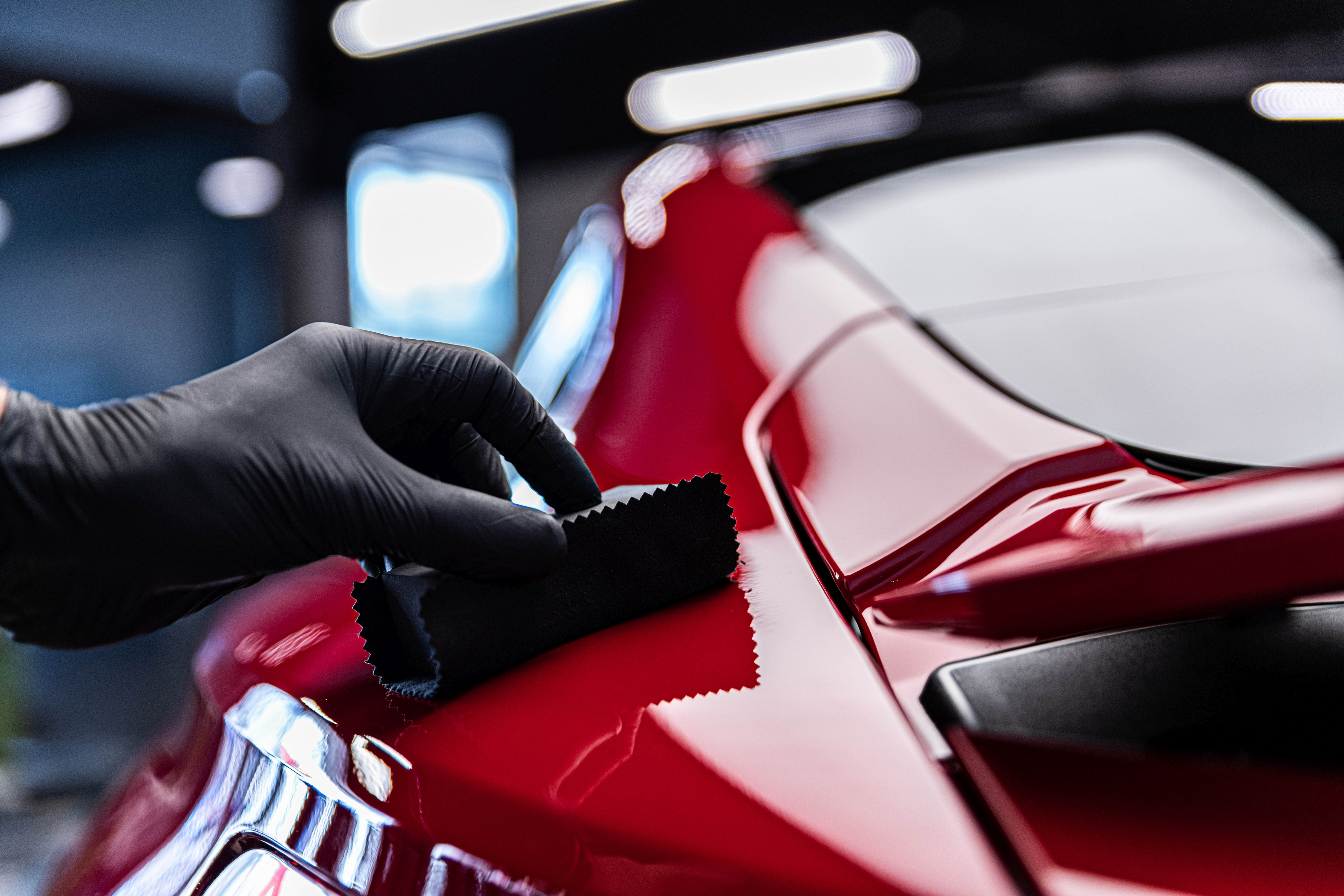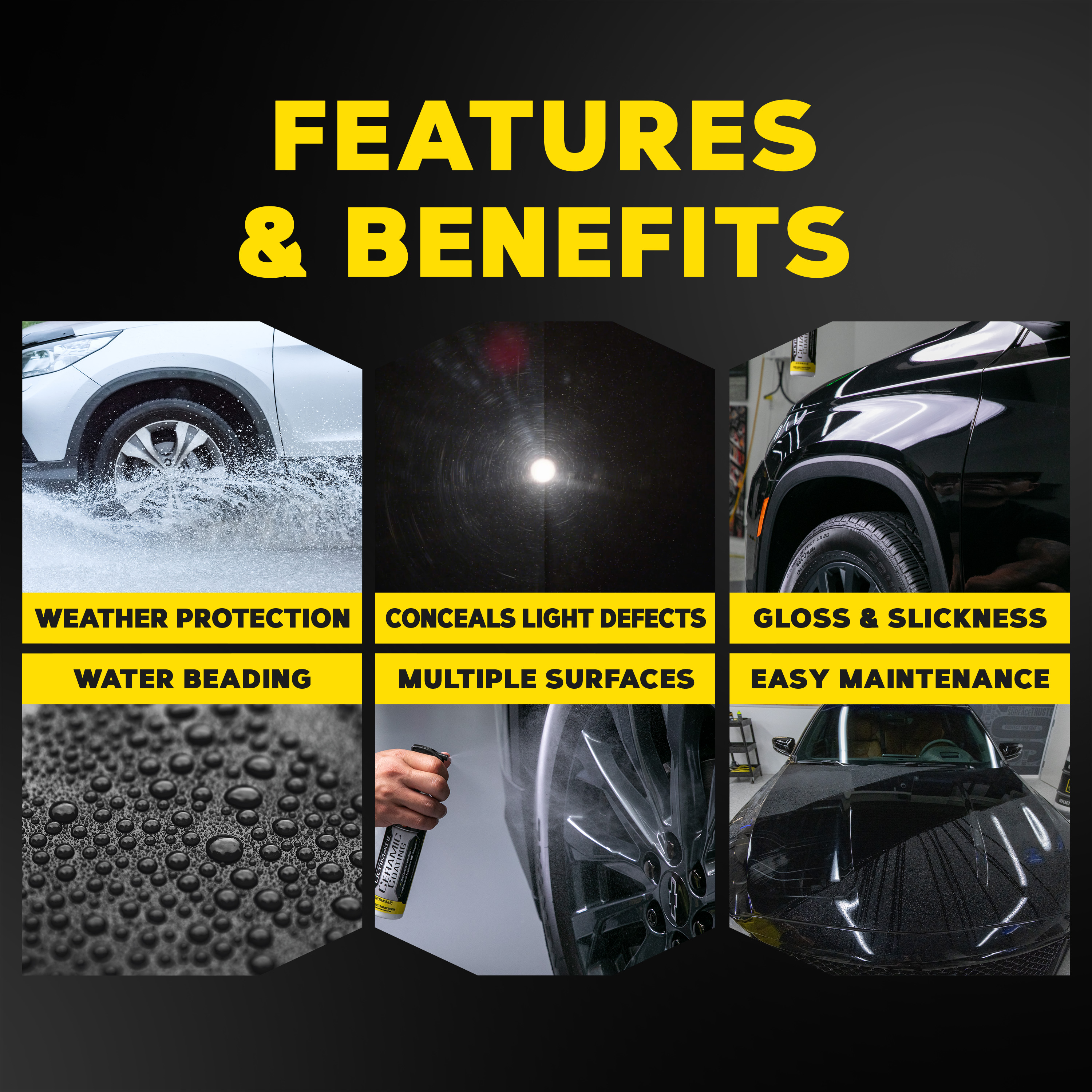Advanced Technology Behind Ceramic Coating Philadelphia for Ultimate Protection
Advanced Technology Behind Ceramic Coating Philadelphia for Ultimate Protection
Blog Article
Why Ceramic Coating Is the Ultimate Solution for a Flawless Finish
Ceramic finish has emerged as a leading remedy for those seeking a perfect finish for their automobiles, many thanks to its impressive durability and protective features. This innovative liquid polymer not just bonds seamlessly with manufacturing facility paint however likewise offers a formidable obstacle against common hazards such as scrapes, UV rays, and toxic wastes. Moreover, its hydrophobic residential properties streamline upkeep while boosting visual allure. Nonetheless, understanding exactly how this technology compares to traditional methods and exploring its application subtleties can expose a lot more regarding its worth. What aspects absolutely set ceramic finish apart?
What Is Ceramic Finishing?

When applied correctly, ceramic coating creates a hydrophobic surface area that repels water and dust, making it easier to preserve and cleanse. Unlike standard waxes or sealers, which usually provide temporary defense, ceramic layers can last for numerous years, relying on the product quality and application method. The process of using ceramic finish requires careful preparation, including detailed cleansing and often paint adjustment, to guarantee optimum bonding and performance.
Ceramic finishings are not limited to automotive surface areas; they can additionally be utilized on various materials, consisting of glass, metal, and plastics, providing a functional solution for boosting security. Generally, ceramic covering stands for a significant improvement in surface defense technology, combining both visual and functional advantages for a wide variety of applications.
Benefits of Ceramic Covering
While lots of surface area defense alternatives exist, the benefits of ceramic covering attract attention as a result of its special properties and long-lasting performance. One of the primary benefits is its remarkable durability. Ceramic Coating Philadelphia. Unlike standard wax or sealers that need frequent reapplication, ceramic coatings offer a resilient layer that can last for numerous years, dramatically decreasing maintenance efforts
An additional remarkable benefit is enhanced defense against ecological impurities. Ceramic layers produce a hydrophobic surface that repels water, dirt, and various toxins, making it easier to clean. This feature not just maintains the automobile's appearance however additionally decreases the threat of rust and oxidation, specifically in severe weather problems.
Furthermore, ceramic coatings use exceptional resistance to UV rays, protecting against fading and destruction of paint over time. This UV security is important for preserving the aesthetic value of surface areas and automobiles subjected to guide sunlight.
Additionally, the glossy surface attained with ceramic finish enhances the total aesthetic appeal, giving surfaces a showroom-quality luster. On the whole, ceramic finishes stand for a significant innovation in surface protection technology, giving long-lasting advantages that provide to both visual and useful demands.
How It Works
Comprehending the scientific research behind ceramic layers exposes how they offer such amazing defense and durability. At its core, a ceramic coating is a liquid polymer that chemically bonds with the vehicle's manufacturing facility paint.
The application process involves multiple actions, consisting of surface area prep work, which is essential to accomplishing optimal bond. As soon as applied, the finishing goes through a treating process, during which it hardens and forms a semi-permanent bond with the paint surface. This bond is what identifies ceramic finishes from conventional waxes and sealants, offering a longer-lasting safety barrier that can withstand for years.
Furthermore, the density of the coating can enhance its protective top qualities, making sure that it can hold up against severe problems. Inevitably, the scientific research of ceramic layers integrates innovative products with innovative application techniques to supply an unequaled degree of protection and visual enhancement for automobiles.
Contrast With Conventional Techniques
When compared to standard paint protection techniques such as waxes and sealers,The benefits of ceramic coatings end up being particularly obvious. While waxes use a temporary sparkle, typically lasting a few weeks to a number of months, ceramic coverings provide a long-lasting protective layer that can withstand for numerous years. This resilience significantly reduces the frequency of reapplication, making ceramic coatings a more cost-effective service in time.
Furthermore, conventional techniques typically call for comprehensive prep work and numerous applications to accomplish a sufficient degree of defense. On the other hand, ceramic finishings bond at a molecular degree with the vehicle's surface, creating a robust shield against ecological impurities like UV rays, acid rain, and road salts. This bond boosts the vehicle's resistance to scrapes and swirl marks, which prevail with traditional waxes and sealants.
Furthermore, the hydrophobic residential or commercial properties of ceramic coverings repel water and dust, causing simpler cleansing and maintenance. On the other hand, wax and sealant-treated surface areas can bring in gunk, requiring even more regular washing - Ceramic Coating Philadelphia. In general, ceramic finishings not just supply superior security but additionally supply a more enduring look these up and aesthetically attractive coating, establishing them as the recommended choice for discerning automobile proprietors
Application and Upkeep Tips

Utilizing a foam applicator, apply the finishing in small areas, adhering to the supplier's guidelines pertaining to thickness and overlap. Permit sufficient healing time in between coats, generally 24 hours, to make certain appropriate bonding. After application, it is essential to prevent exposure to water or extreme elements for a minimum of a week to allow the finish to fully treat.
For maintenance, wash the car regularly with pH-balanced soaps and avoid unpleasant materials. Touchless cars and truck laundries are suggested to lessen scratching. Additionally, utilizing a ceramic maintenance spray can improve the layer's hydrophobic properties and long life. Regular assessments for any indicators of wear will certainly aid maintain the finish's honesty and preserve that excellent coating.
Conclusion
In verdict, ceramic finishing emerges as a superior option for achieving a flawless automotive coating. By developing a robust bond with manufacturing facility paint, ceramic layer effectively guards against scrapes, UV rays, and have a peek at this site environmental pollutants.

Report this page